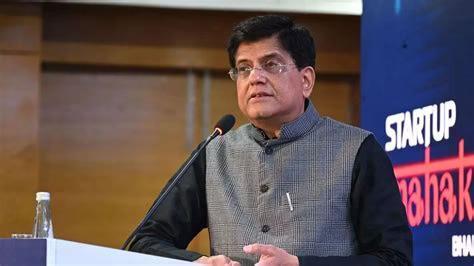
Indian Brands Go Global: Competing on Design & Quality
In recent years, India has transformed from a hub for attracting foreign brands to a significant player in the global market, exporting its own brands to the world. This shift in perception is largely attributed to the country’s strong manufacturing capabilities, strategic marketing, and focus on design and quality. As Indian brands expand globally, they are not only establishing themselves as serious contenders in various industries but also creating brand equity abroad.
The CEO of FCB (Foote, Cone & Belding), Dheeraj Sinha, recently highlighted that Indian brands are winning globally on the basis of design, quality, and competitiveness. In an interview, Sinha emphasized that Indian brands have come a long way in terms of understanding the global consumer and adapting to their preferences. He further stated that Indian brands are not just competing with international brands but are also matching or even surpassing them in terms of quality and design.
One of the key factors contributing to the success of Indian brands globally is their ability to balance traditional values with modern technology. For instance, companies like HCL and Infosys have successfully leveraged their expertise in technology to expand their global footprint. Similarly, fashion brands like Karisma Kapoor’s The House of Karma and designer Rohit Bal’s brand are popular not only in India but also globally, thanks to their unique blend of traditional Indian designs and modern styles.
Another aspect that sets Indian brands apart is their focus on innovation. Companies like Hindustan Unilever Limited (HUL) and ITC Limited are continually investing in research and development to stay ahead of the curve. HUL’s Project Shakti, for instance, aims to empower rural women by providing them with entrepreneurial opportunities through the sale of consumer goods. Similarly, ITC’s e-Choupal initiative has revolutionized the way farmers sell their produce, providing them with access to global markets and better prices.
Indian brands are also leveraging digital marketing to reach a wider audience and create brand awareness globally. Companies like Oyo Rooms and Zomato have successfully used social media and online advertising to expand their customer base and increase brand visibility. Oyo Rooms’ unique approach to hospitality, which combines technology with personalized service, has enabled the brand to expand rapidly across Asia and Europe. Similarly, Zomato’s user-friendly platform and extensive restaurant listings have made it a go-to destination for foodies across the globe.
In addition to these factors, Indian brands are also benefitting from the government’s initiatives to promote Made-in-India products globally. The “Make in India” campaign, launched in 2014, aims to promote India as a manufacturing hub and attract foreign investment. The government has also implemented various policies to simplify the process of exporting products, making it easier for Indian brands to expand globally.
The success of Indian brands globally is not limited to any particular industry. Companies like Titan Industries, which is known for its watches and jewelry, have successfully expanded into the global market. Titan’s focus on design and quality has enabled the brand to compete with international brands like Swatch and Cartier.
Another industry where Indian brands are making a significant impact is the automotive sector. Companies like Tata Motors and Mahindra & Mahindra have successfully exported their vehicles to various countries, including the United States, Europe, and Africa. Tata Motors’ Nano, for instance, has been a huge success in countries like Bangladesh and Sri Lanka, thanks to its affordability and fuel efficiency.
In conclusion, Indian brands are indeed competing on design, quality, and innovation globally. By leveraging their strengths in manufacturing, marketing, and innovation, Indian brands are establishing themselves as serious contenders in various industries. As more Indian brands expand globally, it is likely that we will see a significant increase in the country’s exports and a shift in the global perception of Indian brands.






